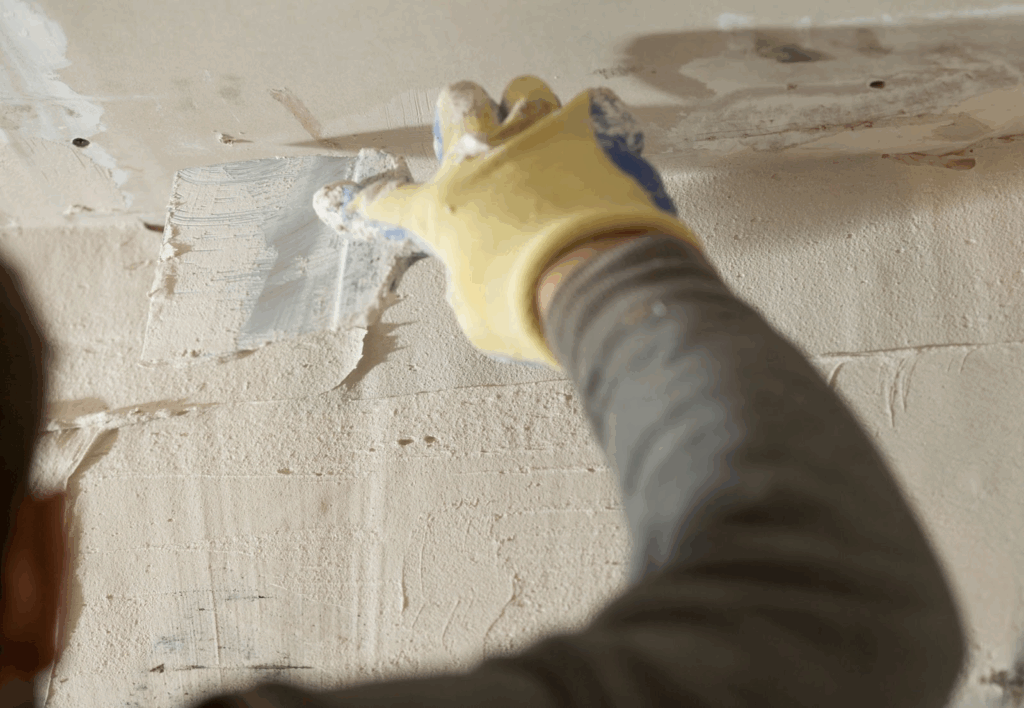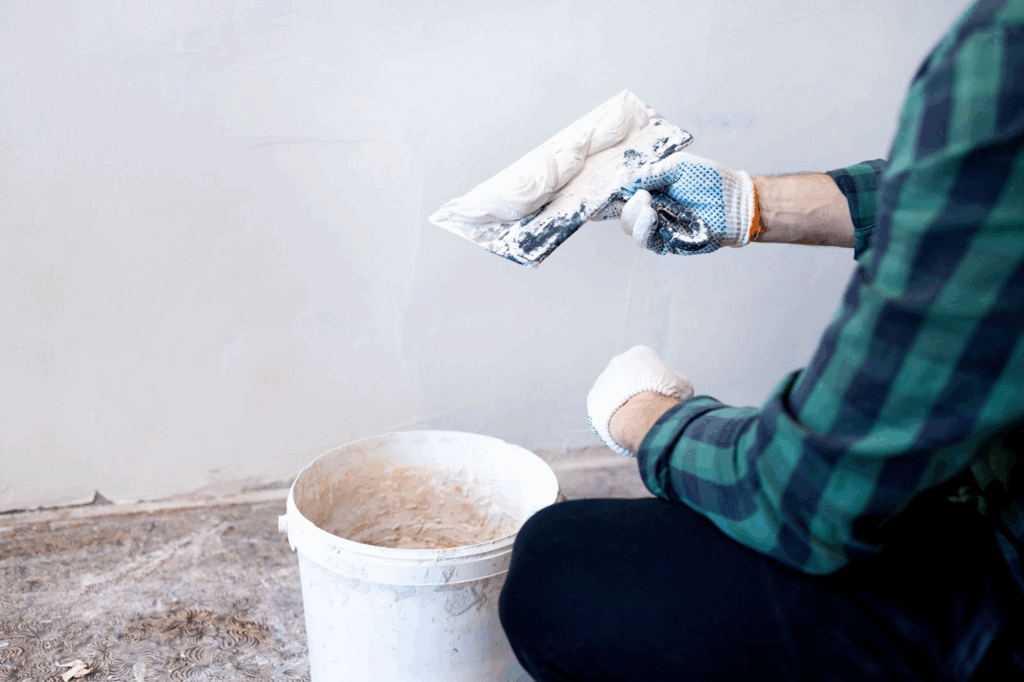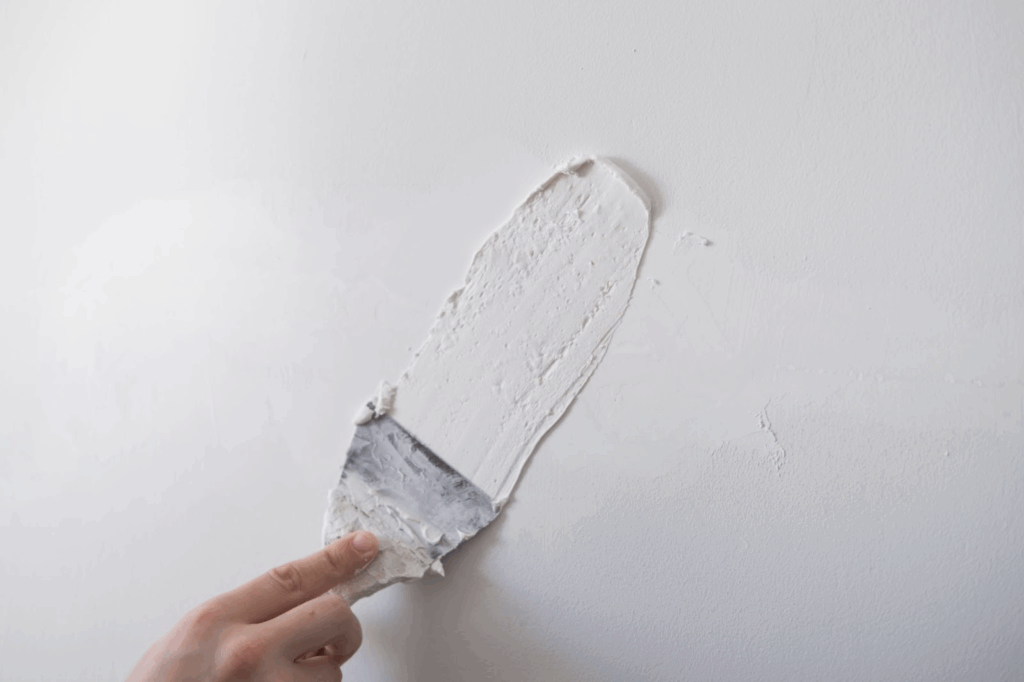
Walls are often the backdrop of daily life, but even the strongest ones pick up dents, cracks, and nail holes over time. People usually reach for wall spackle because it provides a quick fix that blends damage into a smooth surface. While it looks simple in a tub or tube, the science within is what makes the repair durable and clean. Homeowners and professional painters can make repairs that last longer and look better by learning what drives spackle’s effectiveness.
Wall Spackle Defined and Its Purpose
Wall spackle is a compound that fills and repairs minor imperfections in walls. It works best for nail holes, dents, and surface cracks where a strong yet lightweight solution is required. Unlike plaster or drywall compound, spackle dries quickly and sands easily for a smooth finish. In residential painting, spackle prepares surfaces so new paint coats apply evenly and last longer.
Everyday Repairs Made Simple
Wall spackle easily handles the most common household wall problems. When applied, nail holes from picture frames, scratches from furniture, and minor cracks disappear. Because it dries faster than traditional compounds, painting can follow within hours. Its simplicity means even first-time users can achieve professional-looking results. Convenience and reliability explain why wall spackle is a trusted repair solution in many homes.
Spackle vs. Plaster, and Joint Compound
Spackle differs from plaster and joint compound in its formulation and intended use. Plaster is thicker and used for creating or resurfacing entire walls, while joint compound is essential for sealing drywall seams. On the other hand, Spackle is formulated for small-scale applications where speed and ease matter most. It sands down smoothly without leaving a heavy layer behind. These distinctions help homeowners choose the right product for specific repair jobs.
The Chemistry Inside Wall Spackle
The science behind wall spackle lies in its blend of binders, fillers, water, and additives. Each component contributes to how the compound spreads, sticks, and hardens. This balance creates a product that is easy to apply and durable after curing. Knowing these ingredients reveals why spackle works better than makeshift fillers.
How Binders Create Structure
Binders act as the glue that holds the compound together. Most modern spackles use vinyl or latex binders, which create flexibility while maintaining adhesion. These binders prevent crumbling and allow the spackle to grip drywall or plaster effectively. They also give the material the elasticity needed to withstand slight wall shifts. Without a stable binder, the repair would easily crack or fall away.
Fillers That Shape and Smooth
Fillers provide volume and texture to wall spackle, helping it occupy space in cracks or holes. Common fillers like gypsum or calcium carbonate are selected for stability and a smooth finish. The particle size of these fillers determines whether the compound applies finely or coarsely. Smaller particles make sanding easier and create a flush finish with the wall. The right filler ensures both coverage and workability for consistent repairs.
Water and Additives in Action
Water serves as the base that activates and softens the compound for application. Additives control how quickly the spackle dries, how much it shrinks, and how resistant it becomes to mildew. These adjustments improve the user experience, whether the repair is in a dry living room or a damp bathroom. Some formulations include durability enhancers that help the repair withstand humidity or temperature changes. Together, water and additives make wall spackle adaptable to different environments.
How Wall Spackle Hardens and Cures
Spackle changes from a soft compound to a hard surface through drying and curing. During this process, both water evaporation and chemical bonding occur. Environmental conditions such as airflow and humidity directly influence curing speed. Knowing how it hardens helps users plan repairs for stronger, longer-lasting results.

The Role of Evaporation
As spackle dries, water evaporates, leaving behind a hardened mixture. Airflow, room temperature, and humidity levels determine how fast this stage occurs. Dry air and warm conditions speed up drying, while humid rooms slow it down. Repairs can fail if drying happens unevenly across the patch. Monitoring conditions ensures the compound sets evenly for smooth results.
Crystallization Creates Strength
When gypsum-based spackle cures, it undergoes crystallization. Water reacts with gypsum to form interlocking crystal bonds that add durability. These structures turn a once-soft paste into a solid, lasting repair. Over-sanding can damage the crystal network and weaken the patch. A light, steady approach preserves these bonds for dependable results.
The Adhesion Science of Wall Spackle
Spackle works only if it adheres firmly to the wall surface. Its bonding ability relies on both mechanical grip and surface compatibility. Porous walls provide the best adhesion, but smooth or glossy surfaces require preparation. Professional painting services rely on proper spackling techniques to ensure smooth, blemish-free paint coverage.
Spackle on Porous Drywall
Drywall’s porous structure allows spackle to sink in and hold tight. This mechanical grip makes adhesion strong even under light pressure or sanding. Once dry, the surface can be primed and painted for a seamless look. Skipping primer can leave uneven paint absorption, affecting the finish. Preparing with primer creates a polished, lasting wall repair.
Dealing With Smooth Surfaces
Painted or glossy walls resist spackle because they lack natural pores. Sanding lightly or scoring the surface creates the grip needed for bonding. Some modern spackles contain additives that boost adhesion to these challenging surfaces. Cleaning away dust or grease also improves performance. With preparation, even glossy walls can effectively accept spackle.
Preventing Adhesion Failures
Poor adhesion is usually the result of ignoring surface preparation. Dust, grease, or flaking paint interferes with bonding and causes peeling later. Cleaning and sanding remove these barriers and strengthen adhesion. Applying spackle directly on unprepared walls risks wasted effort and rework. Proper prep guarantees that the science of adhesion works as intended.
Advances in Wall Spackle Technology
Wall spackle has advanced with new formulas that make repairs faster, lighter, and safer. Innovations include lightweight spackle, quick-dry options, and eco-friendly blends. These products respond to changing homeowner needs and industry standards. They also improve the overall repair process for convenience and sustainability.
Benefits of Lightweight Spackle
Lightweight spackle uses hollow microspheres to cut density while retaining strength. This adjustment makes the material easier to apply to overhead or large patches. It sands down with less effort, producing smoother finishes quickly. Because it is less heavy, it reduces strain during use. Many homeowners prefer lightweight spackle for quick, manageable wall fixes.
Fast-Drying Formulations
Fast-drying spackle is designed to set within minutes instead of hours. Special additives accelerate evaporation and bonding, allowing for multiple layers daily. It speeds up projects where time matters, such as rentals or commercial spaces. However, the short working time requires precision during application. Users balance speed with care to
avoid uneven surfaces.

Eco-Friendly and Safer Options
Eco-conscious spackle swaps out harsh chemicals for plant-based or mineral-based alternatives. These products reduce odors and volatile organic compounds, improving indoor air quality. Low-VOC spackle is especially useful in areas with limited ventilation. Despite cleaner formulas, performance remains consistent with traditional options. It reflects a broader trend toward sustainable construction materials.
Practical Science in Spackle Application
Applying spackle properly depends on both technique and understanding. The compound reacts differently when layered, sanded, or over-watered. Mistakes often lead to cracks, uneven patches, or excess dust. Skilled spackle application distinguishes between a patchy finish and a flawless wall in interior painting projects.
Getting the Mix Right
The right consistency ensures that spackle spreads evenly into wall flaws. Too much water weakens adhesion and causes shrinkage, while too little creates clumps. A creamy texture indicates a proper balance for smooth application. Correct mixing also reduces sanding time later. Consistency sets the foundation for a successful repair.
Layering for Better Results
Spackle shrinks as it loses water, so thick layers often crack. Thin, even coats dry quickly and stay flush with the wall. Waiting for one layer to cure before adding another prevents flaws. This layering technique ensures smooth, crack-free results. It also saves sanding effort after drying.
Sanding to Finish the Repair
Fillers and binders determine how easy or difficult sanding becomes. Fine fillers make sanding smooth, while coarse ones resist more. Sanding lightly avoids damaging the wall or weakening the patch. Dust control is also essential, especially for indoor repairs. A careful finish improves both appearance and paint adhesion.
Wall Spackle as Everyday Science
Repairing with spackle shows material science in action at home. From drying time to adhesion, every patch demonstrates physical and chemical principles. Observing these changes helps users understand how spackle behaves. These small lessons turn routine repairs into opportunities to learn.
Watching Drying and Curing
A spackle patch behaves differently depending on room conditions. Warm, dry rooms speed drying, while damp areas slow it down. Observing these changes shows the role of the environment in curing. Planning repairs around these factors improves efficiency and results. Homeowners who track drying times make smarter repair choices.
Testing Adhesion at Home
Adhesion can be tested by gently scratching the dried repair. If spackle flakes off, surface preparation was inadequate. Strong adhesion indicates that cleaning and sanding worked effectively. These simple checks confirm whether the compound is appropriately bonded. Learning from these tests improves future application methods.
Why Wall Spackle Science Matters
Understanding the science of wall spackle leads to better results. It helps select the right product, prepare surfaces, and apply it correctly. Knowledge reduces wasted effort and improves the durability of repairs. Every repair becomes a reliable solution rather than a temporary patch.
Selecting the Right Type
Choosing the right spackle depends on project needs. Lightweight formulas handle small patches well, while durable blends fix deeper cracks. Specialty spackle exists for exterior surfaces that face weather exposure. Reading product labels with knowledge ensures the right match. A well-chosen product improves both efficiency and longevity.
Building Confidence in Repairs
Applying spackle becomes easier when you know how it works. Surface prep, layering, and sanding make sense in a scientific context. Mistakes such as overfilling or skipping primer become less likely. Confidence grows with each successful repair. Understanding turns a simple repair job into a lasting improvement.
Strengthen Your Next Project with Wall Spackle
Wall spackle is more than a quick patch—it’s a dependable tool that shapes cleaner, more substantial repairs. The science inside every tub proves that even the smallest fix can hold lasting value. Choosing and applying the right spackle confidently turns ordinary walls into polished surfaces again. Trust the science and repair it correctly when you notice a dent or crack.
Are you curious about the materials behind flawless finishes? The Euro Painting blog offers expert insights that turn wall science into practicality.

